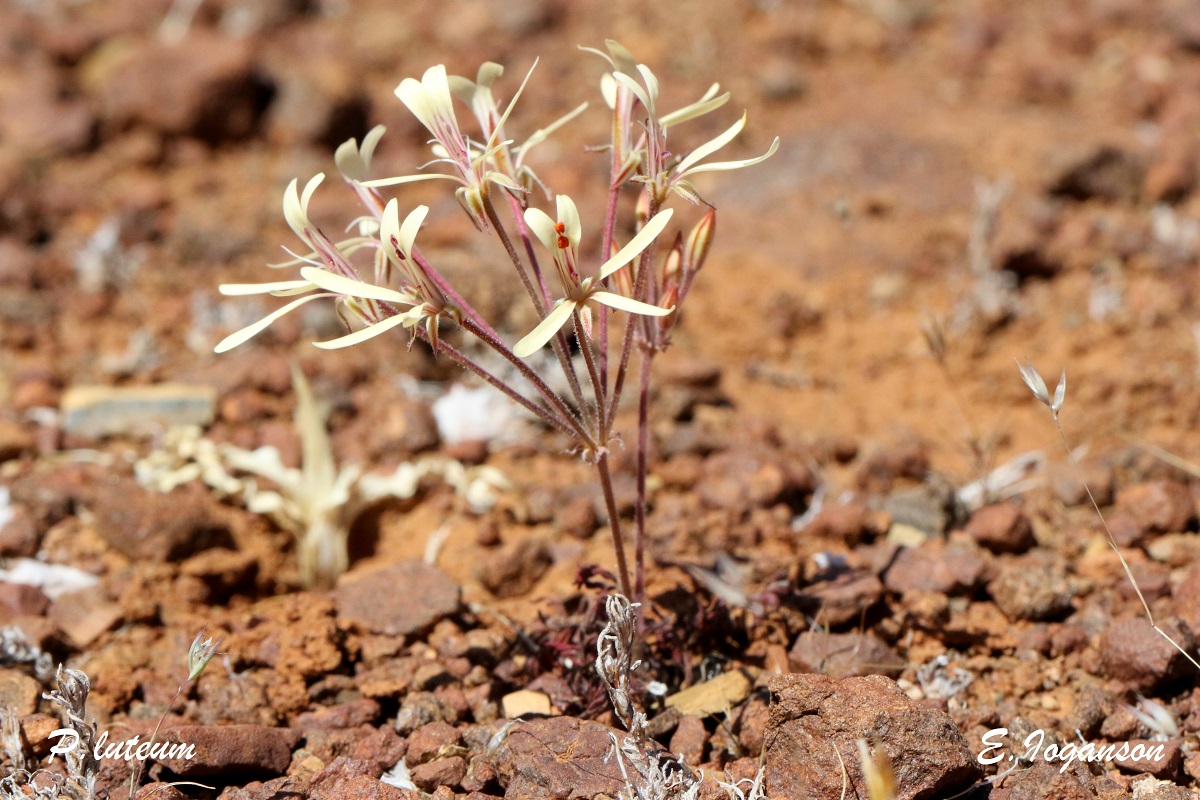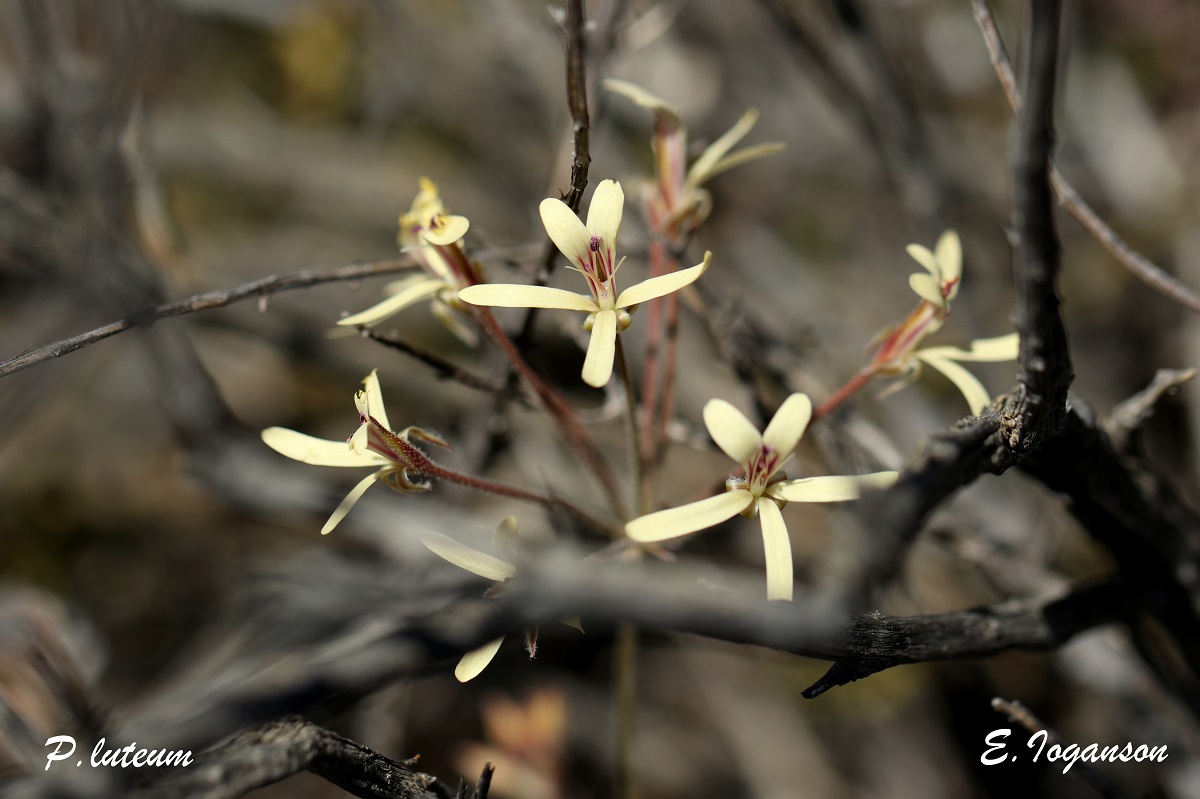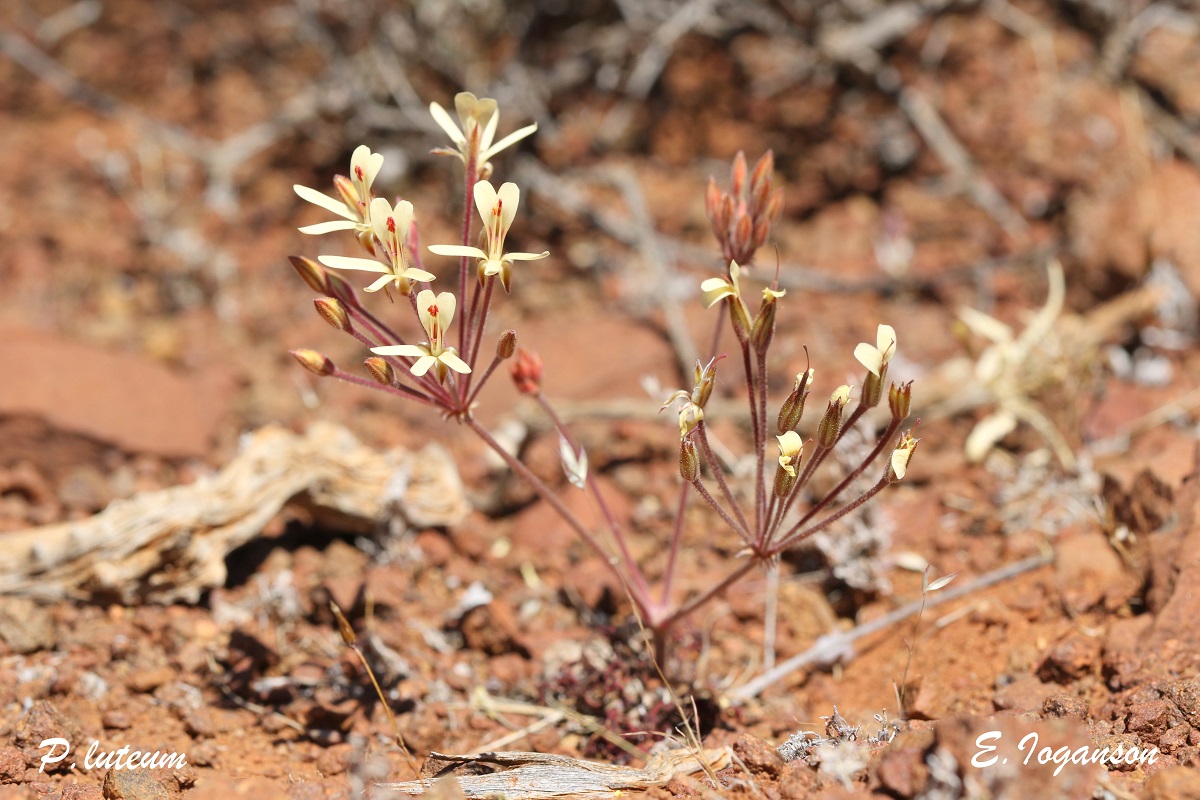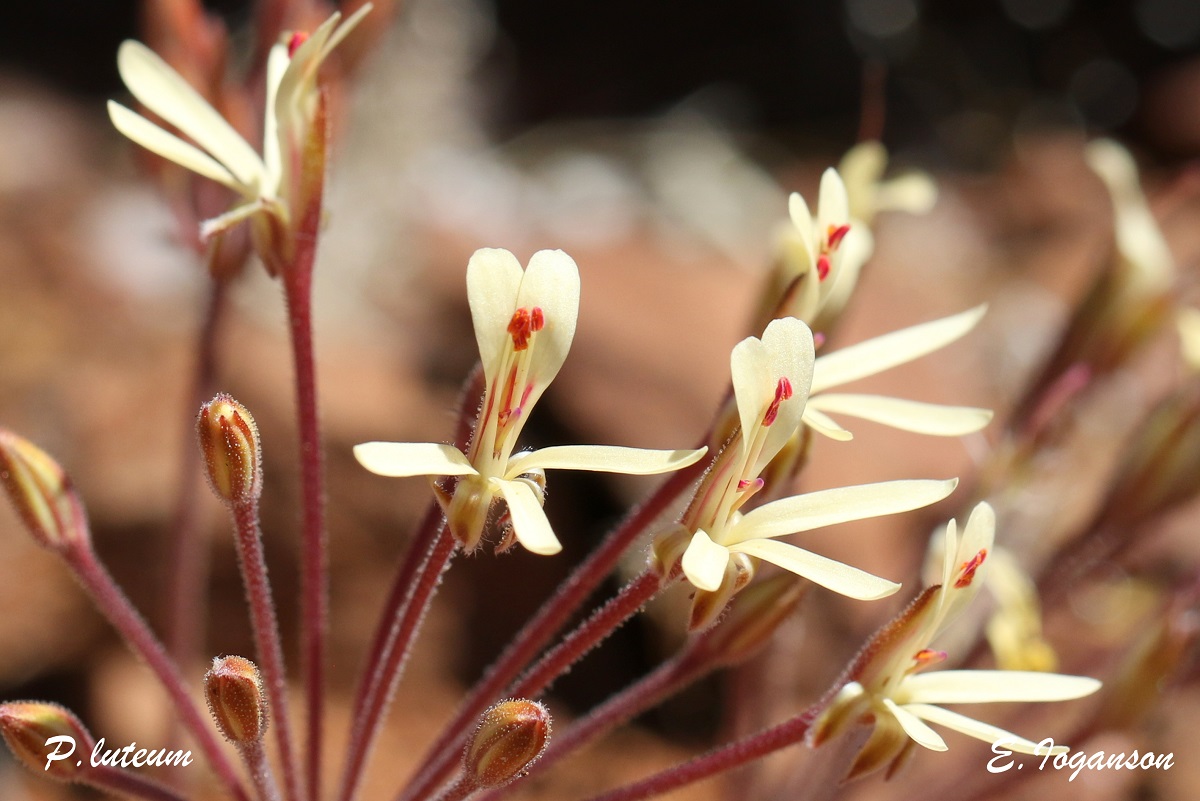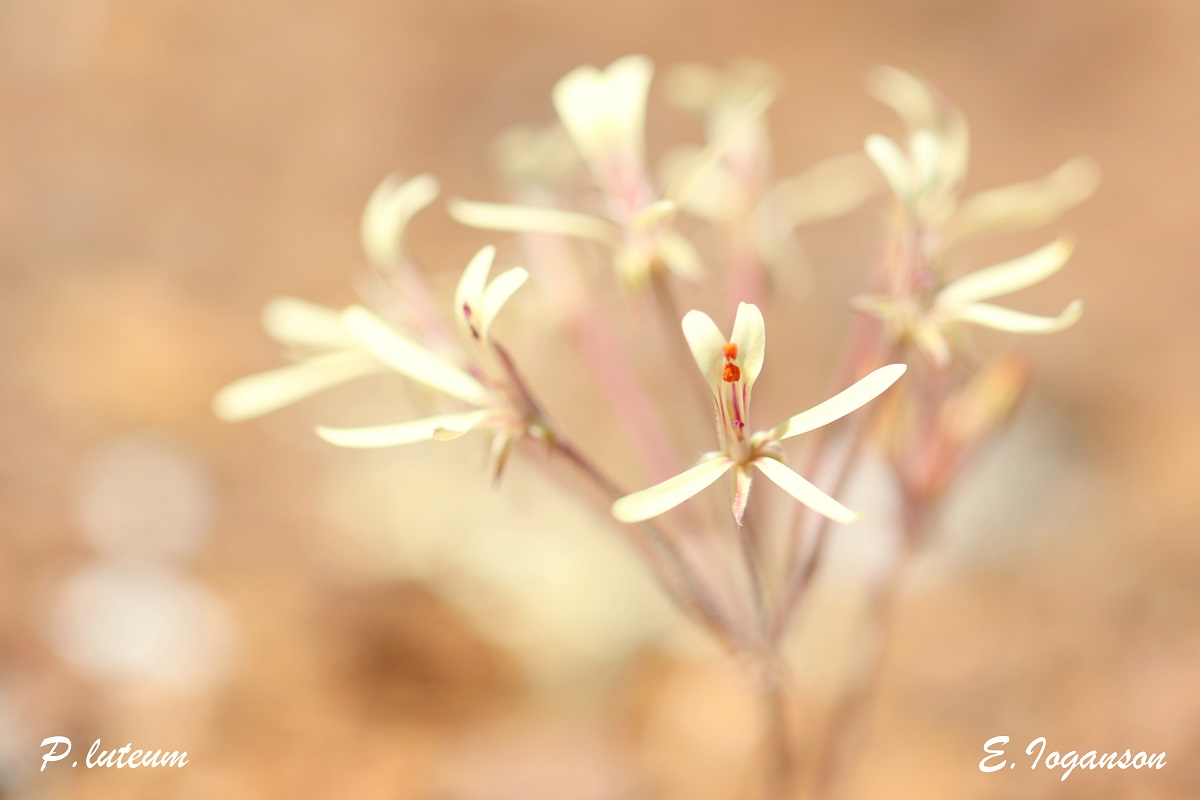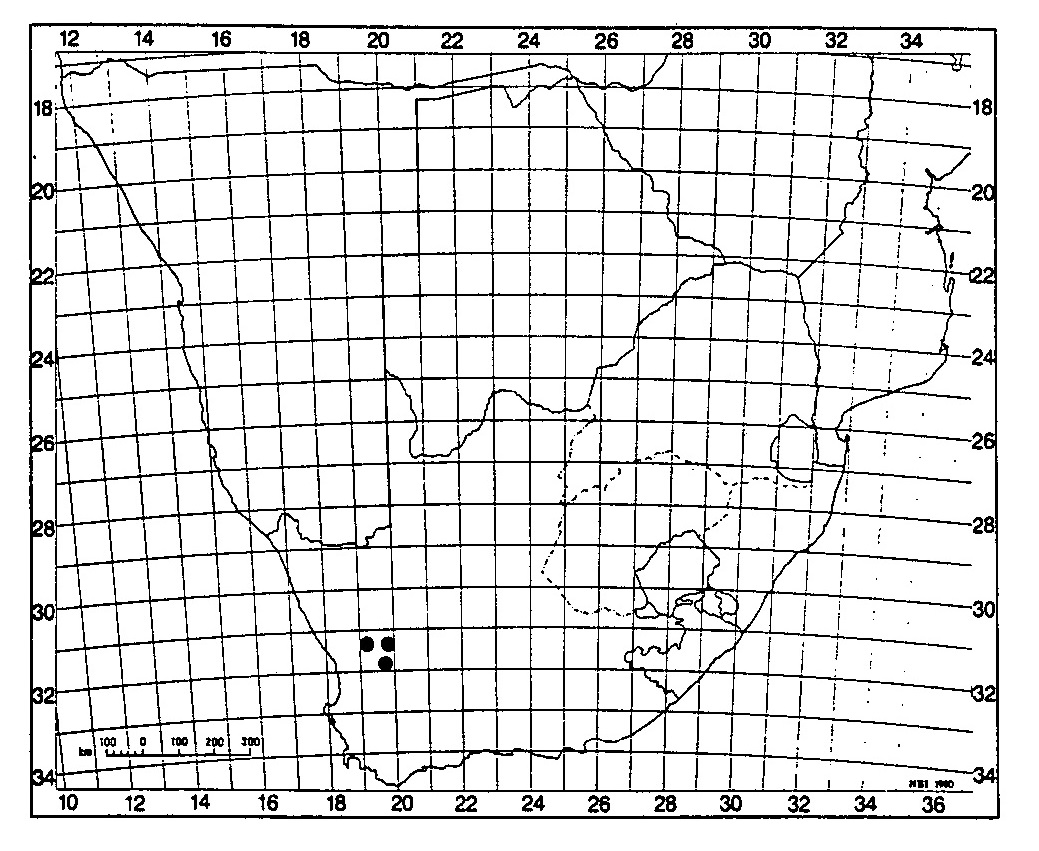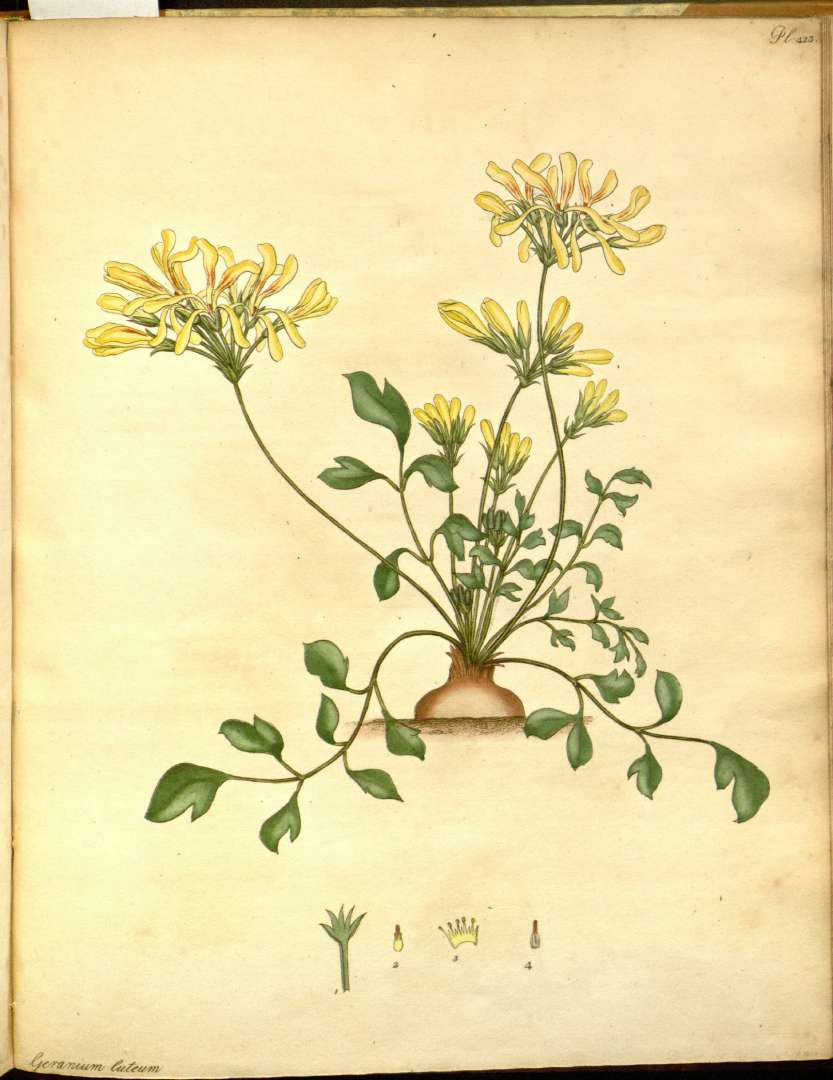P. luteum
РусскийPelargonium luteum (Andr.) G. Don (1832)
genus: Pelargonium L'Héritier
subgenus: Pelargonium L'Héritier
section: Hoarea (Sweet) De Candolle
chromosome number 2n=22
A geophyte 110-200 mm tall when in flower. Tuber: a turnip-shaped or elongated root 19-60 mm long and 25-40 mm in diameter. Leaves green, petiolate; lamina elliptic, irregularly pinnate to bipinnatisect, 50-120 mm long; pinnae 10-40 mm long, incised, segments laciniate, abaxially and abaxially sparsely hirsute with appressed hairs and sparsely interspersed with glandular hairs; petiole 20-80 mm long and 1,5-2 mm in diameter, rigid, erecto-patent, covered with glandular hairs interspersed with appressed stiff hairs; stipules subulate or narrowly triangular, adnate to petioles for half to almost their total length, 5-10 mm long and 1-2 mm wide, ciliate. Inflorescence: scape 10-25 mm long, 1,5-3 mm in diameter, branched, bearing 4—9(-12) pseudo-umbellets with16(-20) flowers each; peduncles 50—150 mm long, 1—2 mm in diameter, hirsute with appressed curly hairs interspersed with long glandular hairs; bracts lanceolate, 2-5 mm long, 1-2 mm wide, abaxially hirsute with appressed hairs, interspersed with glandular hairs. Pedicel: ca.0,5 mm long. Hypanthium: 20-33 mm long, reddish green, indumentum as on peduncle. Sepals: 5, lanceolate, apices acute, 6—8 mm long, 1-3 mm wide, posterior one erect, others recurved, reddish green with white margins, indumentum abaxially as on peduncle. Petals: 5, yellow, patent during anthesis; posterior two with pale pink or red V-shaped markings, ligulate to spathulate, bases cuneate, apices rounded or emarginate, recurved, 11-15 x 2,5-4 mm; anterior three ligulate, bases attenuate, apices rounded or obtuse, 11-15,5 x 2-2,5 mm. Stamens: staminal column 1-3 mm long, white; perfect stamens 5, posterior one 3-4 mm long, lateral two 5,5-7,5 mm long, anterior two 7-9 mm long, white, free filaments of lateral and anterior ones twisted so that pollen surfaces of anthers are turned to the front; staminodes 2-3,5 mm long; anthers dark pink, 1-2 mm long, the posterior one smaller than the others, pollen orange. Gynoecium: ovary 1,5-5,5 mmlong; style 1,5-5,5 mm long, white; stigma branches 1-2 mm long, adaxially wine-red. Fruit: bases of mericarps 4-6 mm long, with glandular hairs, tails 21-25 mm long.
Diagnostic features and affinities
P. luteum is a geophyte with irregularly pinnate to bipinnatisect leaves and yellow flowers, hence the specific epithet. The androecium of P. luteum is typical for the genus Pelargonium and for the section Hoarea in having ten filaments and five fertile stamens. However, the way in which the fertile stamens are borne during anthesis, is unique (Figure 1).
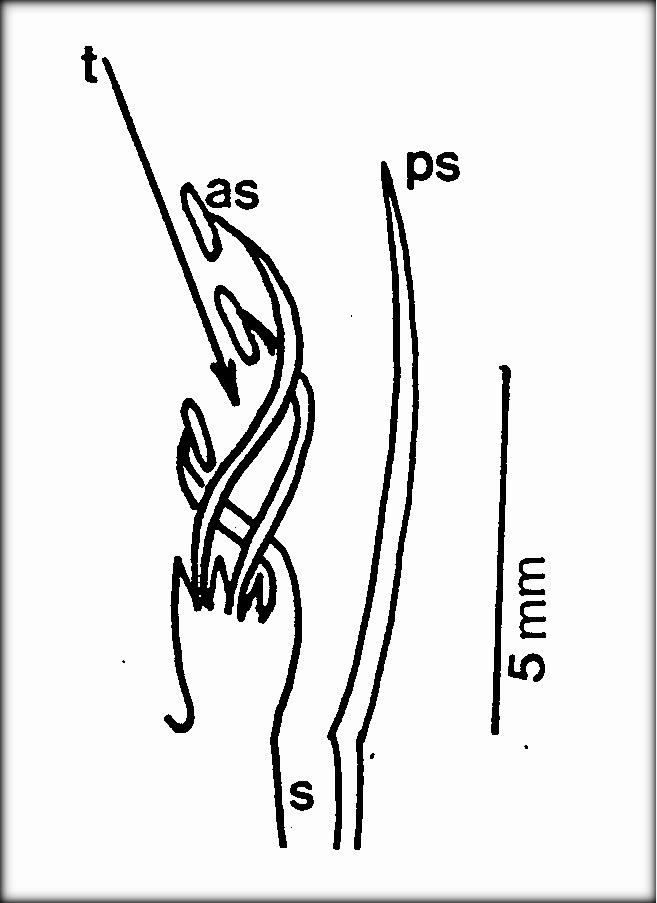
Figure 1. Androecium of P. luteum; here are: as - anterior stamen, ps - posterior sepal, s - spur, t - tunnel
The posterior stamen is bent, pushing aside the pistil. At the same time the filaments of the lateral and anterior stamens are twisted so that the open anthers form a pollen-lined tunnel to the nectar tube. A remarkable elongation of the pistil occurs after the anthers are dropped. This is aimed at cross-pollination, and the special structure of the androecium is an indication of a special pollinator for this species. The delicate appearance of the pseudo-umbellets, the colour and the form of the petals and the way in which the fertile stamens are borne in P. luteum, indicate a relationship with P. fumariifolium.
P. luteum in habitat. Akkerendam Nature Reserve, Northern Cape, South Africa. Photos by E. Ioganson
Distribution and ecology
The known distribution area of P. luteum is very small. It has only been recorded from the area around Nieuwoudtville and Calvinia in rocky places in sand in karroid vegetation. This area has very hot summers and an annual rainfall of 200-300 mm, which occurs mainly in winter.
Distribution of P. luteum
P. luteum flowers from October to November. Each plant has a large number of pseudo-umbellets which flower in succession, thus lengthening the flowering period of the plant. At the end of the flowering time all the leaves have died.


P. luteum as Geranium luteum. H.C. Andrews. The botanist’s repository (1804-1805), v. 6


References
- Marais, E.M. 1994. Taxonomic studies in Pelargonium, section Hoarea (Geraniaceae), Ph. D. thesis, University of Stellenbosch.

























